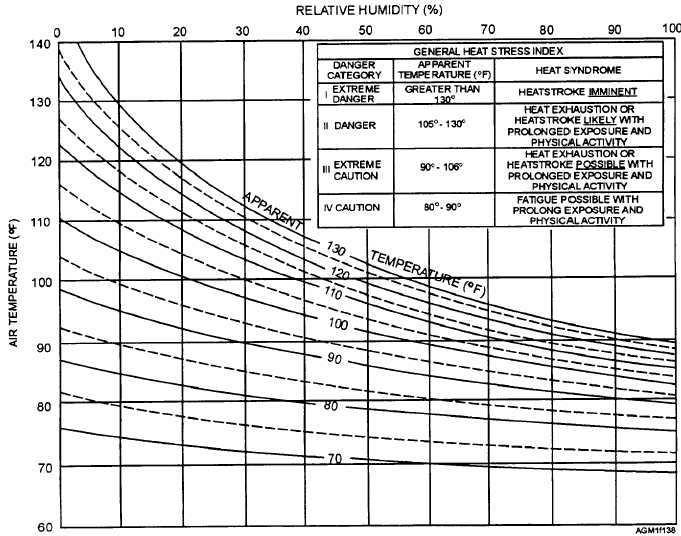relative humidity is routinely computed at many shore
stations whenever the air temperature and wet-bulb
temperatures are measured.
While the effects of moisture in the air affect how
people react to temperature by altering the evaporation
rate of moisture on the skin, the effects of wind may also
alter the evaporation rate of moisture from the skin and
affect the temperature of the human body.
General Heat Stress Index
The General Heat Stress Index (GHSI), also
referred to as the apparent temperature, is a measure of
how hot the air "feels" to an average person based on the
temperature and the humidity. It does not take into
account direct sunshine, wind, or the type of clothing a
person is wearing. The GHSI value is the "apparent
temperature" in National Weather Service public
forecasts.
The GHSI may be computed from the
relative humidity and the air temperature by using
figure 1-38.
As an example, with an air temperature of 90°F and
a relative humidity of 60%, read the apparent
temperature at the intersection of the horizontal air
temperature line and the vertical relative humidity line.
In this case the GHSI or the apparent temperature is
100°F. Interpolate between the lines as necessary.
While interpretation of what a given apparent
temperature feels like may vary from person to person,
the differences among various apparent temperatures
are objective and based on physiological research.
The General Heat Stress Index uses four categories
to relate "apparent temperature" to the probable
occurrence of heat-stress-related injury as follows:
Apparent Temperature 130°F and up—Category
I, EXTREME DANGER—Heatstroke
imminent
Figure 1-38.—General Heat Stress Index nomogram.
1-56


